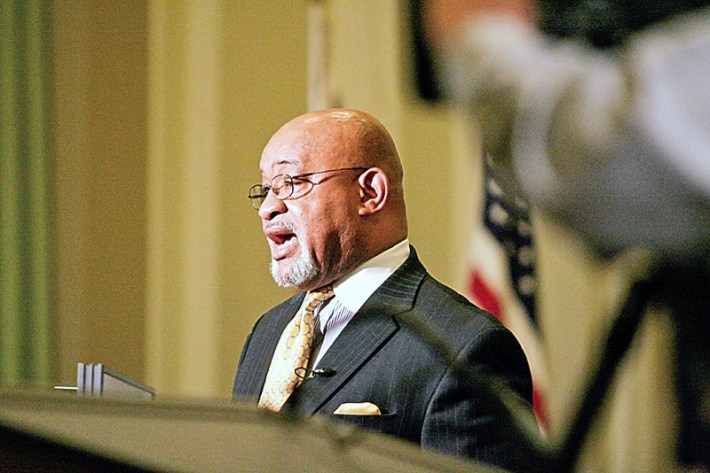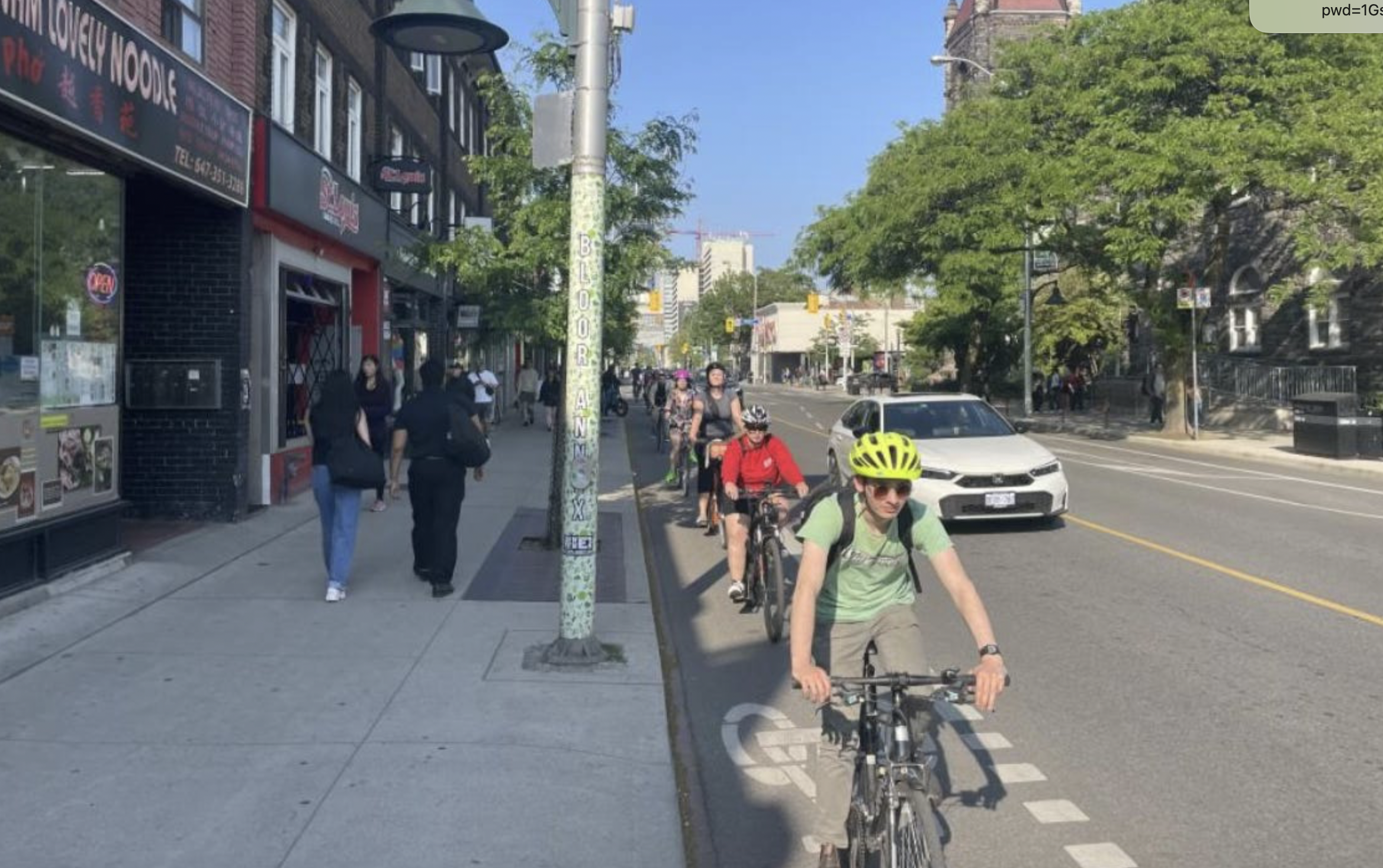These remarks were given last week at a Town Hall on Transportation Disparities Among Disadvantaged Communities in Columbus, Ohio. The event engaged state and national civil rights groups and elected officials in a discussion about how federal transportation investments can better advance social and economic equity in Ohio. These remarks were reprinted with permission of the author.
Good evening. My name is Samuel Gresham Jr. and I am the executive director of the Ohio Commission on African-American Males. Our mission is to help African-American males take responsibility for the improvement of the quality of their lives, by dismantling structural inequality through public policy advocacy, community organizing, and research.

Transportation as a Civil Rights Issue
Transportation is and will always be a civil rights issue. The Civil Rights Movement of the '50s started with Rosa Parks led to the historic Montgomery bus boycott.
Transportation and transit systems have always and will continue to impact the lives of people of color. The old “railroad tracks” adage has always been central to the lives of African-Americans. Black people have always lived on the other side of the railroad tracks. When you travel through the African-American community today, railroad tracks and highways are major lines of separation regarding the quality-of-life that exist on one side versus the other.
This is supported today by data; according to the Census Bureau (2005-2009) American Community Survey of workers aged 16 and over, 57 percent of public transportation users are African-American, while only 38 percent are white. On the top of that, 32 percent of public transportation users make less than $10,000 a year, while 81 percent make under $35,000 and 23 percent live below the poverty level. Furthermore, a majority of riders (38 percent) had no vehicle available to them and 31 percent had only one vehicle available. It's pretty clear that we are not using public transit for the pleasure of waiting for a bus.
The lack of reliable transportation options disenfranchises people of color while reinforcing cycles of poverty. Unreliable public transportation limits job opportunities and makes it more difficult for people to get work.
And while those who do have a car may enjoy better mobility, it comes at quite the cost. According to Transportation for America, one-third of Americans spend 42 percent of their annual household budget on automotive ownership.
Dr. Robert Bullard, a sociologist from Clark Atlanta University and a leading expert on race and the environment stated, "The nation's transportation system is a kind of apartheid. It was set up to create racial, economic, social, and geographical barriers in our communities." The shame of that statement is that some of our opponents clearly understand the impact of transportation systems but somehow our friends neglect to see the impact that transportation systems have on the poor and working class.
Ohio's Civil Rights Failures
Transportation investment in Ohio has produced an inhospitable landscape for low-income people, people with disabilities, and the elderly. People of color are disproportionately disadvantaged by the current state of transportation through the cost of car ownership, under-investment in public transportation, and thoroughfares that have isolated low-income people and struggling families from jobs and services.
This is the civil rights dilemma of Ohio: Our laws purport to level the playing field, but our transportation choices have effectively barred millions of people from getting across it. Traditional nondiscrimination protections do not protect the people for whom opportunities are literally out of reach.
For this reason, our transportation policies [must] expand and improve access to people for whom the cost of car ownership is prohibitive and for those who may depend on public transportation, including older adults, people with disabilities, people in rural areas, and low-income people. Thoroughfares have exacerbated transportation inequities by extending the gaps between housing and jobs. Equity agendas should favor fixing existing infrastructure and incentivizing fill-in development in metro areas.
Ohio invests 99 percent of its transportation resources on highways, leaving less than 1 percent for public transportation, putting it 40th in the nation. All the states in the nation that spend less on transit then Ohio are more rural states, with an average population of only 20 percent of Ohio's. Nearly 9 percent of Ohio's households have no vehicle. Despite the need for public transportation, Ohio's transit agencies have been forced to slash transit services and raise fares. A decade ago, federal operating funds for public transportation systems serving communities of more than 200,000 were severely cut. Most states dramatically increased support for public transportation; the state of Ohio has cut funding by 75 percent since 2002.
Ohio's transportation policy needs to support a wide range of choices and users, not just car travel on highways and roadways. Studies show that 60 percent of bus trips in Ohio are work-related, and that people under the age of 40 are less likely to own cars. Ohio's younger adults need access to education, jobs, and entertainment without needing a car. Seniors or people with disabilities may not be able to use a car or may not want to drive. Innovative transportation solutions are needed in Ohio's suburbs and rural areas; these communities have a tremendous need to access employment and services.
Righting the Ship
Transportation decisions contribute to economic and racial segregation in our metro areas. Emphasis on one use -- highways (without sidewalks, bike access, or rapid bus routes) -- contributes to segregation and severely restricts housing choices for people with disabilities, low-income people, and the elderly. When a community is car-dependent, those who cannot afford automobiles, or lack the ability to drive, experience a significant reduction in quality-of-opportunity and life.
Transportation equity requires equitable decision-making power. Currently there are a number of transportation policy bodies that do not represent all constituents equitably. A more equitable transit system is only possible if low-income people, people of color, and people with disabilities have meaningful representation in local decision-making bodies such as metropolitan planning organizations. Everyone should have a seat at the table when transportation policies are developed and funds are spent.
Transportation equity requires meaningful civil rights protections in order to combat the structural racism through transportation systems that exclude communities of color, people with disabilities, and low-income populations. Investments, local statutory reform and vigorous enforcement of existing civil rights laws are needed. Enforcing civil rights protections to ensure fair and equitable access to the benefits of our transportation system and to prevent disproportionately negative impacts on disadvantaged communities should be a priority of national, state, and local governments.
Transportation policy has always played a central role in the struggle for civil and human rights. Practical access to transportation helps ensure access to good schools and housing, basic services like healthcare, the acquisition of job skills and employment opportunity. Conversely, the absence of affordable, available, and accessible transit threatens the civil rights of millions of Americans. Past investment has disproportionately benefited people in outlying areas, leaving many low-income families out of reach of jobs, and forcing others to exhaust their budgets on transportation at the expense of other needs such as health care, housing, food, and education.
We urge our government leaders to support transportation investments that focus on equity.





